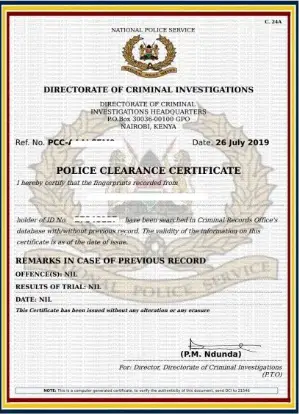Have you ever wondered what happens to a motor vehicle after it’s auctioned off through a court order? Whether you’re a judgment debtor or a potential new owner, understanding the process is crucial.
In this article, we’ll take you through the ins and outs of transferring a motor vehicle after it has been auctioned off by court order, as mandated by the National Transport and Safety Authority (NTSA).
Requirements for Motor Vehicle Transfer
So, what are the essential requirements for transferring a motor vehicle in this scenario? NTSA has outlined a comprehensive list of prerequisites to ensure a smooth transition of ownership.
Request Letter for Alternative Transfer
The journey begins with a simple yet crucial step: drafting a request letter for an alternative transfer. This letter serves as your formal application to NTSA, explaining the circumstances and your intent to transfer the vehicle.
Original Logbook or Police Abstract and Form XI Where Logbook is Missing or Lost
If you still possess the original logbook, consider yourself fortunate. It’s a key document in the transfer process. However, if the logbook is missing or lost, don’t worry. You can substitute it with a Police abstract and Form XI.
Properly Filled Form C
Form C is the official document for vehicle transfer in Kenya. Ensure that it is accurately and completely filled out, leaving no room for errors or discrepancies.
Tape Lift Report
Now, here’s where things get interesting. The tape lift report is a unique requirement. It’s essentially a vehicle condition report that verifies the car’s state before the auction and can be crucial in resolving disputes later.
Sworn Affidavit Before a Magistrate or Judge
A sworn affidavit is a legal declaration made under oath. You’ll need to visit a magistrate or judge to make this declaration, confirming the accuracy of the information you’ve provided in your request.
Copy of ID and KRA PIN of the New Owner
To complete the transfer, you’ll need to provide a copy of the new owner’s identification (ID) and their Kenya Revenue Authority Personal Identification Number (KRA PIN). This ensures that the new owner is eligible for the transfer.
Copy of Records Showing Details of the Previous Owner
It’s essential to have a clear record of the previous owner’s details, including their name and address. This information helps NTSA verify the ownership history of the vehicle.
Certificate of Sale Issued by the Auctioneer
The certificate of sale is the document that officially confirms the sale of the vehicle through the auction. It contains crucial information about the sale, including the date, price, and parties involved.
Copy of the Auctioneer’s License and Registration Certificate
The auctioneer must be licensed and registered with the appropriate authorities. Providing a copy of their license and registration certificate ensures that the auction was conducted legally.
Copy of the Newspaper Advertisement
A public announcement of the auction is made through newspaper advertisements. Keeping a copy of this advertisement is necessary to prove that the auction was conducted openly.
Certified Copy of the Warrant of Attachment
The warrant of attachment is the legal document issued by the court authorizing the seizure of the debtor’s property, including the vehicle.
Copy of the Court Order Issuing the Directive of Sale
The court order is the heart of the matter. It’s the official document that directs the sale of the judgment debtor’s property, including the vehicle in question.
Copy of the Schedule from the Auctioneer
The auctioneer provides a schedule that lists the properties attached for sale. This schedule should include detailed information about the vehicle.
New Owner Must Have a TIMS Account
Last but not least, the new owner must have a Transport Integrated Management System (TIMS) account. TIMS is an online platform that facilitates various services related to motor vehicles in Kenya, including transfer of ownership.
Conclusion
In conclusion, transferring a motor vehicle after it has been auctioned through a court order is a process that requires careful adherence to NTSA’s guidelines. From preparing the necessary documents to ensuring compliance with legal requirements, following each step diligently is essential.
As my cousin’s experience showed, while it may seem daunting, the process can be straightforward if you take it one step at a time and pay attention to detail. Compliance not only ensures a smooth transition of ownership but also protects your interests and minimizes the risk of legal complications.
So, whether you find yourself in the shoes of a judgment debtor or you’re considering purchasing an auctioned vehicle, remember that NTSA’s guidelines are there to guide you through the process.
With the right documentation and a clear understanding of the steps involved, you can successfully transfer a motor vehicle and get back on the road without unnecessary hassle.



